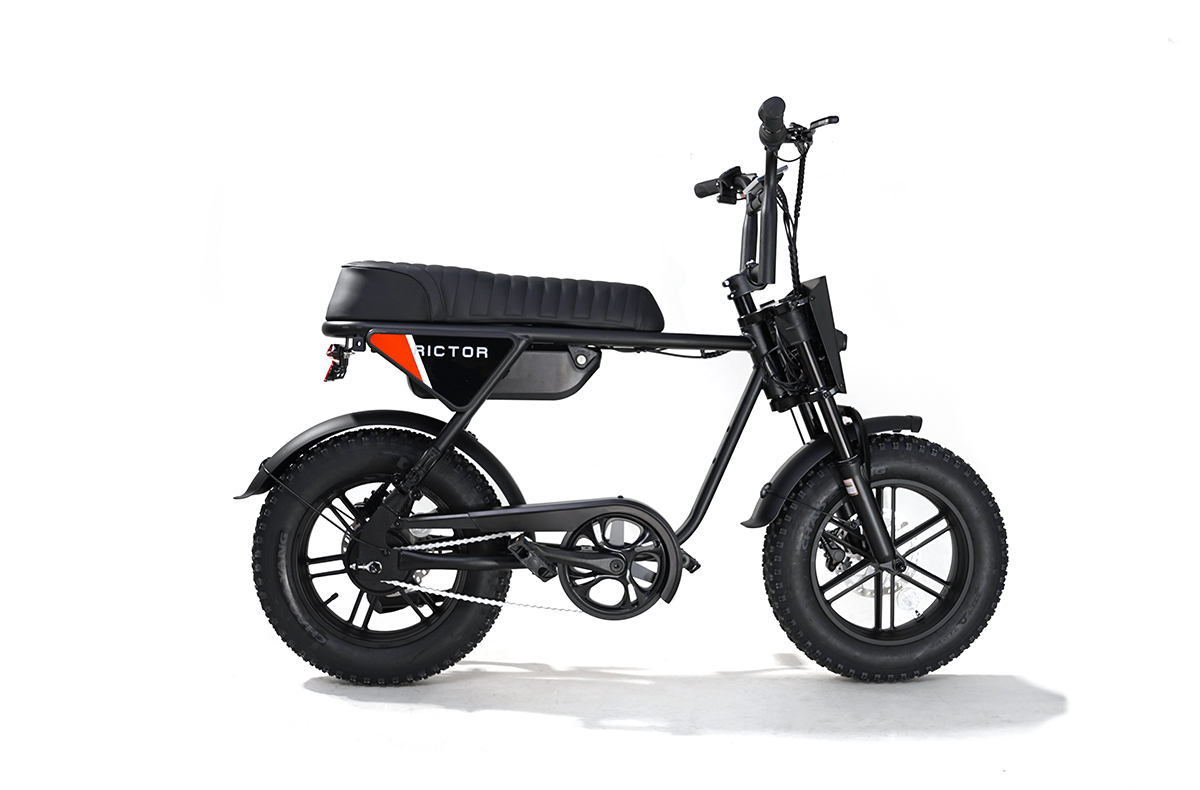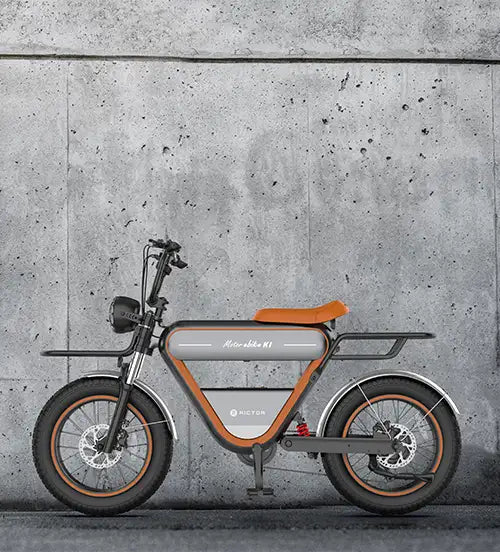
2025 California Ebike Tax Credit & Rebate
Finding electric bikes on sale? When purchasing an electric bicycle, don't forget to check if your state offers an electric bike incentive project. Here's a comprehensive introduction to California's Electric Bicycle Incentive Program. The updated tax credits and rebates available this year are some of the most generous in the nation, making electrical bike ownership more accessible to people across various income levels.
Key Changes to the California E-bike Incentive Program in 2025
For 2025, the California Air Resources Board (CARB) has made important changes to the state's electric bicycle rebate program. The funding has increased to $15 million dedicated to electric bicycle incentives. The maximum rebate amount has increased too, allowing qualifying low-income residents to receive up to $1,500 toward their electric bike purchase, while moderate-income households can get up to $1,000.
The program now uses a tiered approach based on household income relative to the Area Median Income (AMI). Residents earning less than 225% of the Federal Poverty Level qualify for the maximum incentive, while those with incomes up to 400% can still get substantial support.
Related Reading: Are Electric Bikes Street Legal? Everything You Need to Know
Eligibility Requirements for the 2025 California Electric Bicycle Rebate
To qualify for the program in 2025, you must be a current California resident with valid proof of residency, such as a California driver's license or state ID. Income verification is also required, as the program targets low and moderate-income households.
Qualifying electric bicycles must be new and purchased from authorized California retailers participating in the program. These bicycles must meet the state's classification system for electric bicycles (Class 1, 2, or 3) and comply with safety standards. Electric bikes must have a maximum pre-tax purchase price of $8,000 for standard models and $10,000 for cargo or adaptive electrical bicycles.
How to Apply for the 2025 California Electric Bike Tax Credit
The application process has been streamlined for 2025. Here's how to apply:
Visit the official program website hosted by the California Air Resources Board at California Electric Bicycle Incentive Project
Create an account and log in to the portal
-
Complete the pre-qualification process, including income and residency verification
-
Submit required documentation electronically
-
Once pre-qualified, receive a reservation number valid for 60 days
-
Purchase an eligible electric bicycle from a participating retailer during this period
-
The retailer will apply the incentive as a point-of-sale discount
-
Alternatively, submit proof of purchase through the online portal within 90 days for a post-purchase rebate
Tax Benefits Beyond Direct Rebates for Electric Bicycle Commuters
Beyond the direct rebates, commuters may qualify for the Bicycle Commuter Tax Credit that allows eligible individuals to claim up to $800 annually for electric bike-related expenses. This covers maintenance, safety equipment, and storage solutions.
To claim this benefit, you need to document regular use of your electrical bicycle for commuting, with logs showing at least 100 commuting days per year. Submit these records and receipts with your state tax filings.
Regional Incentive Programs Complementing State Offerings
Several California regions have their own supplementary rebate programs that work with the state-level incentives. The Bay Area offers an additional $500 rebate, while the South Coast district provides up to $750 in supplementary funding for residents in Los Angeles, Orange, Riverside, and San Bernardino counties.
The Sacramento area offers an additional $300 incentive specifically for electric bicycles used for workplace commuting. These regional incentives stack with the state program, potentially reducing the cost of a quality electric bike by 50% or more for eligible residents.
Income Qualification Tiers and Benefit Amounts for 2025
The 2025 program provides the most help to those with the greatest financial need:
- Households earning less than 225% of the Federal Poverty Level: $1,500 rebate
- Incomes between 226% and 300% of the Federal Poverty Level: $1,000 rebate
- Households between 301% and 400%: $750 rebate
For example, a single person earning less than $31,500 annually would qualify for the maximum incentive, while a family of four with an income below $67,500 would also be eligible for the highest rebate level.
Qualifying Electric Bicycle Categories Under the 2025 Program
The California Electric Bicycle Incentive Program recognizes different needs by including various electric bike categories in its coverage. Standard commuter electrical bicycles qualify for the standard rebate amounts based on income eligibility. Cargo electric bicycles, designed to transport children or goods, receive an additional $200 supplement due to their higher average cost.
Folding electric bikes qualify for standard incentive amounts despite their typically higher price point. The program also includes adaptive electrical bicycles designed for riders with mobility limitations, offering an additional $500 supplement beyond the standard rebate amounts. Each category must still meet the basic program requirements regarding motor power, speed capabilities, and safety features.
Electric Bicycle Safety Requirements and Program Compliance
To qualify for incentives, all electric bikes must meet these specific safety standards:
✅ Consumer Product Safety Commission compliance for bicycle construction and safety
✅ UL certification for all electrical systems and components
✅ California Vehicle Code compliance for electric bicycle definitions
✅ Class 1 (pedal-assist only, up to 20 mph) eligibility
✅ Class 2 (throttle-assisted, up to 20 mph) eligibility
✅ Class 3 (pedal-assist, up to 28 mph) eligibility with required speedometer
Program participants must also:
✅ Complete a state-approved electric bicycle safety training course
✅ Submit training completion certificate with rebate application
✅ Purchase from authorized participating retailers
Conclusion
The 2025 California Electric Bicycle Incentive Program offers a great opportunity for residents to switch to sustainable transportation with financial support. By combining state rebates with potential federal tax credits and regional programs, qualifying Californians can significantly reduce the cost of purchasing a quality electric bike.
Electric bikes make getting around town easier and more fun. They're perfect for 10km trips without working up a sweat. You still get some exercise, which is great for your health, but hills won't leave you exhausted. No more sitting in traffic or hunting for parking spots! If you have trouble getting around, electric bikes can really help, especially on hilly streets. The RICTOR K1 smart ebike takes things up a notch with cool features that learn how you ride, remember your routes, and keep your bike secure.
FAQs
How do income requirements affect my eligibility for the maximum California electric bicycle rebate in 2025?
Income requirements are based on household size and percentage of Federal Poverty Level, with maximum benefits of $1,500 available to those earning less than 225% of FPL.
Can I combine the California state electric bike rebate with local incentives in my area?
Yes, the state program works with regional and local incentives. Many air quality districts offer additional rebates of $300-$750 that can be stacked with the state program.
What happens if I sell my electric bicycle after receiving the California rebate?
You must keep your rebated electrical bike for at least one year after purchase. Selling before this period requires repayment of the incentive amount to the state.





